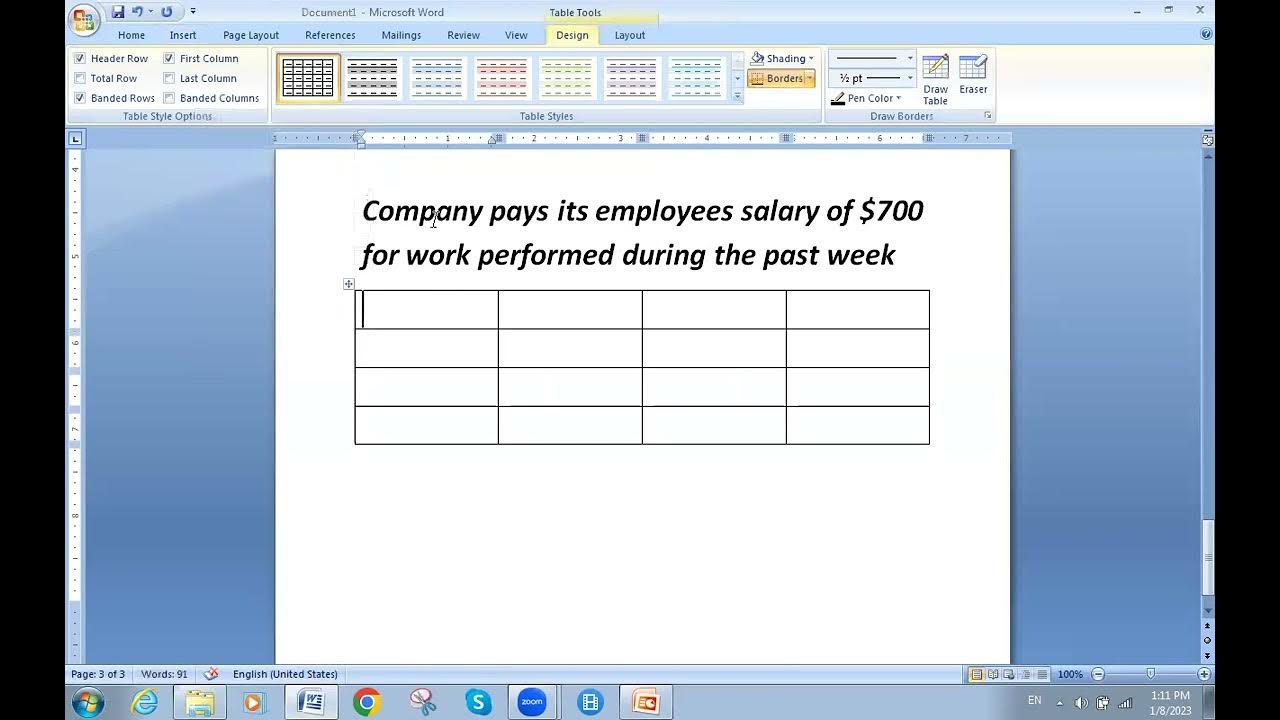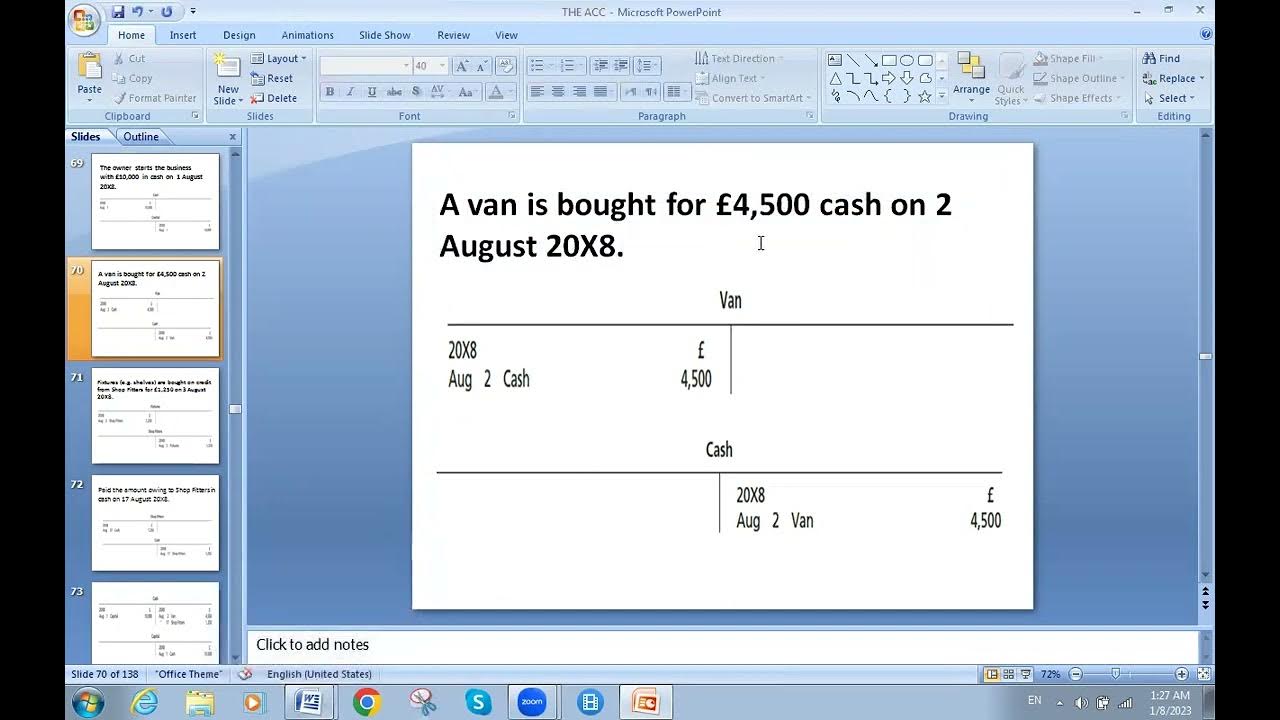Grade 9 EMS Combined CRJ CPJ DJ DAJ presentation 20200420
Summary
TLDRIn this video, the instructor guides students through understanding and categorizing financial transactions into four key journals: the Cash Received Journal (COJ), Cash Paid Journal (CPJ), Debtors Journal (DJ), and Creditors Journal (DIJ). The video emphasizes identifying specific transaction types for each journal, such as cash sales for COJ, cheque payments for CPJ, credit sales for DJ, and returns from debtors for DIJ. Students are encouraged to draw maps and consult their textbooks to match transactions with the appropriate journals. The session culminates in completing an activity to reinforce these concepts.
Takeaways
- 😀 Students are tasked with mapping the four accounting journals: COJ, CPJ, DJ, and DIJ.
- 😀 The activity encourages students to draw a tree map to visually organize the journals and their corresponding transactions.
- 😀 The four journals represent: COJ (Cash Receipts Journal), CPJ (Cash Payments Journal), DJ (Debtors Journal), and DIJ (Debtors' Invoices Journal).
- 😀 COJ records cash receipts, such as cash sales, interest received, capital contributions, and EFT payments.
- 😀 CPJ tracks cash payments, including payments made by check, EFT, and bank charges.
- 😀 DJ is for credit sales and transactions involving accounts receivable, such as sales on credit and issued invoices.
- 😀 DIJ is used for returns from debtors, including stock returned by debtors and credit notes issued for invoice corrections.
- 😀 Students should refer to their textbook (pages 25, 74, 77, and 78) to identify example transactions for each journal.
- 😀 Key examples of transactions for each journal include: cash sales and interest for COJ, payments by check or EFT for CPJ, credit sales for DJ, and returns for DIJ.
- 😀 The activity helps students connect theoretical journal concepts to practical examples, making it easier to categorize transactions.
- 😀 After completing the tree map, students should apply their knowledge to Activity 11 by matching transactions to the appropriate journal.
Q & A
What is the primary objective of the lesson discussed in the video?
-The primary objective of the lesson is to help students understand how to classify transactions into the appropriate journals (COJ, CPJ, DJ, DIJ) by analyzing different types of accounting transactions.
What materials are needed to follow along with the lesson?
-Students need a clean piece of paper, a textbook (specifically the EMS textbook), and pens or pencils to complete the activities in the lesson.
What is the purpose of creating a tree map during the lesson?
-The tree map is used to visually organize and categorize the different journals and their associated types of transactions, helping students understand which transactions belong in each journal.
What are the four journals discussed in the lesson?
-The four journals discussed are: COJ (Cash Receipts Journal), CPJ (Cash Payments Journal), DJ (Debtors Journal), and DIJ (Debtors Adjustments Journal).
What type of transactions are typically recorded in the COJ (Cash Receipts Journal)?
-Transactions such as cash sales, payments received from debtors, capital contributions, interest from the bank, and any other cash receipts are recorded in the COJ.
What kind of transactions belong in the CPJ (Cash Payments Journal)?
-Transactions including payments made via check or EFT, cash purchases, bank charges, and interest payments are recorded in the CPJ.
What does the DJ (Debtors Journal) primarily record?
-The DJ records credit sales or sales on account, where goods or services are sold to a debtor and payment is deferred. It typically involves invoicing a debtor.
What is the purpose of the DIJ (Debtors Adjustments Journal)?
-The DIJ is used to record returns or adjustments related to debtors, such as when a debtor returns goods or when there are corrections made to an invoice (often through a credit note).
What are some examples of transactions that could be recorded in the COJ?
-Examples of transactions in the COJ include cash sales, receiving payments from debtors, receiving capital contributions, receiving interest from the bank, and any other forms of cash inflows.
How does a credit note relate to the DIJ?
-A credit note is issued in the DIJ when a debtor returns goods or when there is an adjustment to an invoice. It reduces the amount the debtor owes to the business.
What should students do after reviewing the textbook and identifying transactions for each journal?
-After identifying transactions for each journal, students should complete activity 11 in their textbook, using the tree maps they have created to classify the transactions into the correct journals.
Outlines

Cette section est réservée aux utilisateurs payants. Améliorez votre compte pour accéder à cette section.
Améliorer maintenantMindmap

Cette section est réservée aux utilisateurs payants. Améliorez votre compte pour accéder à cette section.
Améliorer maintenantKeywords

Cette section est réservée aux utilisateurs payants. Améliorez votre compte pour accéder à cette section.
Améliorer maintenantHighlights

Cette section est réservée aux utilisateurs payants. Améliorez votre compte pour accéder à cette section.
Améliorer maintenantTranscripts

Cette section est réservée aux utilisateurs payants. Améliorez votre compte pour accéder à cette section.
Améliorer maintenant5.0 / 5 (0 votes)






